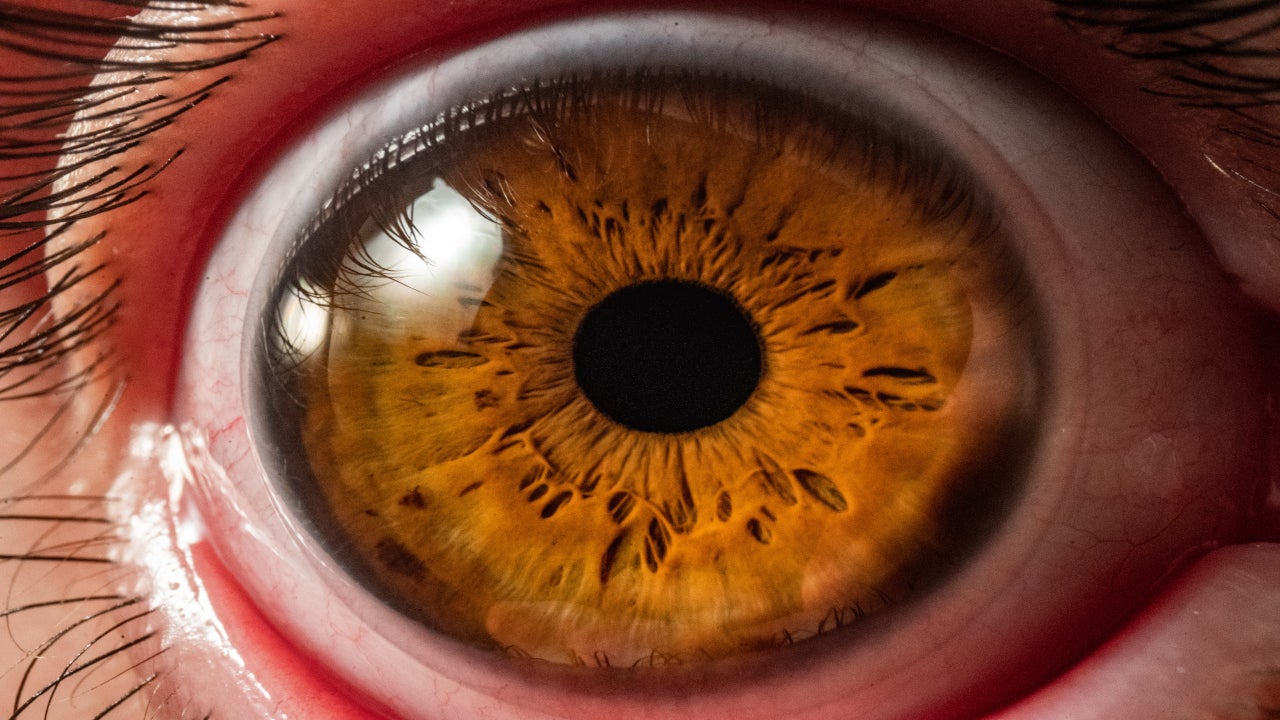
The cooling sensation from Aerie’s eye drop is designed to trigger tear production in dry eye syndrome. But how patients interpret the effect, and when they’re asked to assess symptoms, may impact its ongoing Phase IIb trial’s success potential.
By stimulating tear production through a cooling sensation, Aerie’s AR-15512 could demonstrate dry eye syndrome (DES) improvements in its ongoing Phase IIb trial. However, how patients interpret the cooling effect and when a patient-based assessment is measured present possible barriers to trial success.
In DES, trials must demonstrate improvement in both sign and symptom-relevant endpoints. For Aerie’s Phase IIb trial (NCT04498182), the sign endpoint is the anesthetised Schirmer’s test—which measures tear volume—and the symptom endpoint is the Ocular Discomfort Score (ODS)—which measures symptom relief according to patients.
Although ODS is an FDA-accepted measure, an investigator noted the trial has patients rating ODS based on how they feel the previous 24 hours, rather than immediately after dosing. As a result, patients may undervalue the positive effects of the cooling sensation, which could be shorter-term, he explained.
And while AR-15512’s cooling sensation could both stimulate tears and relieve pain, there is some uncertainty over how patients may interpret the cooling effect. One ophthalmologist noted that a cooling temperature could make some patients experience increased dryness despite having more tears.
How well do you really know your competitors?
Access the most comprehensive Company Profiles on the market, powered by GlobalData. Save hours of research. Gain competitive edge.

Thank you!
Your download email will arrive shortly
Not ready to buy yet? Download a free sample
We are confident about the unique quality of our Company Profiles. However, we want you to make the most beneficial decision for your business, so we offer a free sample that you can download by submitting the below form
By GlobalDataAs for the sign endpoint, the anesthetised Schirmer’s Test, as opposed to the unanesthetised version, is a strong choice that ensures sign-related improvements are related to AR-15512.
The Phase IIb trial has topline results expected in the third quarter. An Aerie spokesperson did not respond in time for deadline.
Timing of symptom endpoint critical
The ODS scale is one of many patient-based assessments used to measure symptom improvement, said Louis-Marie Grignion Tong Hak Tien, PhD, senior consultant, Corneal & Eternal Eye Disease Department, Singapore National Eye Centre. ODS is a patient-based assessment that covers eye dryness, stinging, itching, foreign body sensation, eye discomfort, photophobia, and pain.
Because the cooling effect could be shorter-lasting, having patients assess their symptoms immediately after one of their twice daily doses could yield the strongest results, a trial investigator said. But in the Phase IIb trial, patients are asked to rate ODS based on how they feel in the 24 hours preceding the assessment, the investigator said.
Efficacy assessments are made at days 14, 28 and 84, with the coprimary endpoints measured at day 28. The ODS readings take place during site visits prior to further dosing, the investigator said. Any immediate positive effects from cooling will have a less outsized effect on patients when they assess their symptoms over a 24-hour period, he explained.
Perception of cooling effect uncertain
The cooling sensation produced by a TRPM8 agonist like AR-15512 could help patients with DES by increasing wetness of the ocular surface, said Dr Michael Korenfeld, ophthalmologist, Comprehensive Eye Care, Washington, Missouri. This is the result of both the blink rate and of other neurological systems involved in tear release, Korenfeld explained.
In addition, the cooling sensation itself could improve the well-being of patients, the investigator said, citing the popularity of over-the-counter cooling towels among patients with DES as evidence patients are drawn to the effect.
However, when some patients experience a change of temperature on their ocular surface they feel increased dryness in their eyes, Tong said. As a result, it is possible that patients on AR-15512 would have more tears but feel more dryness, rendering uncertainty in how they interpret the net effect of the treatment, he added.
Other symptom-relevant endpoints available
The Phase IIb trial’s symptom endpoint of ODS was not the same measure assessed in a previous Phase I/IIa trial, which instead used the Global Symptom Assessment Questionnaire iN Dry ye (SANDE) score.
But while it is uncommon to switch endpoints in DES trials as drugs progress through various phases, this occasionally occurs if a drug is found to improve certain signs and symptoms measured better by certain scales in the early phases of testing, Korenfeld said. The FDA requires data showing any DES asset to improve on symptom-relevant endpoints, and there is more than one valid endpoint that is accepted for this purpose, he added. Though the investigator noted a cooling sensation is not considered a direct symptom improvement on any DES symptom scale.
For patient-driven symptom assessments such as ODS, an improvement of 20% relative to placebo is typically considered a clinically meaningful result, Tong said. In the previous Phase I/IIa trial, more than 70% of patients receiving AR-155122 twice daily had at least a 20-point improvement in the SANDE score.
Welcome sign endpoint selection
For AR-15512’s sign endpoint, the Schirmer’s Test, which measures tear volume, is very commonly used and validated test in DES clinical research studies, Korenfeld said. In DES, the FDA requires drugs to demonstrate efficacy in both sign and symptom coprimary endpoints.
And because the Phase IIb trial uses the anesthetised Schirmer’s test instead of the unanesthetised version, it will generate a more accurate reading of tear production by ensuring that tear production is a result of the drug and not the ocular administration of the treatment, Tong said. The anesthetised version removes the possibility that irritation from the drug’s administration could also contribute to the tear volume produced by treatment, he explained.
If the drug’s mechanism works as expected, AR-15512 should generate increased tear volume along the Schirmer’s test, the investigator said. In the placebo-controlled Phase I/IIa trial, there was a statistically significant increase in tear production, defined as the percentage of subjects with more than a 3mm improvement.
Promising mechanism and safety
The TRPM8 receptor, which AR-15512 targets, is a protein channel that acts as a cooling sensor, explained Seok-Yong Lee, PhD, professor, biochemistry, Duke University, Durham, Carolina. By agonising this receptor, the drug generates a cooling sensation that subsequently triggers the cornea to produce basal tears, added Lee, who researches TRPM channels in his lab.
In addition, Lee said TRPM8 agonism could also provide pain relief due to the protein’s role in inflammation. TRPM8 agonists, which are already used to treat general inflammation, could relieve pain for patients with DES both by reducing swelling in the ocular area and by generating tear production, Lee explained.
In the Phase I/IIa trial, there were no severe adverse events, with most events rated mild. The ongoing Phase IIb is unlikely to demonstrate any serious safety concerns, experts said.
William Newton is a Healthcare Reporter for Clinical Trials Arena parent company GlobalData’s investigative journalism team. A version of this article originally appeared on the Insights module of GlobalData’s Pharmaceutical Intelligence Center. To access more articles like this, visit GlobalData.









Related Company Profiles
Duke University
Insights Co Ltd
Aerie Corporation
DES Pty Ltd
ODS Co